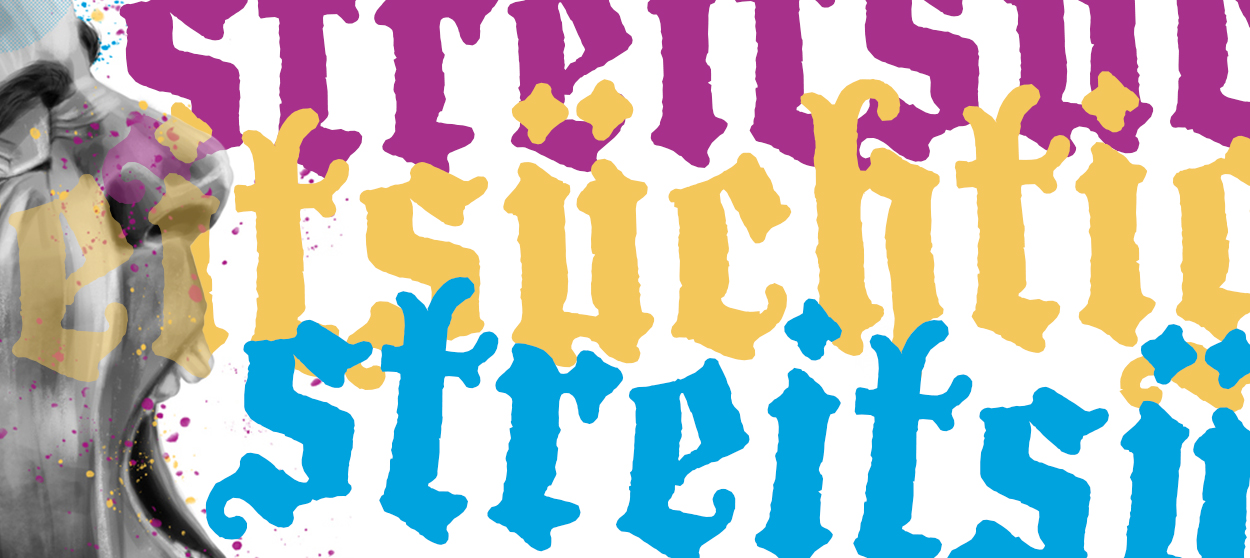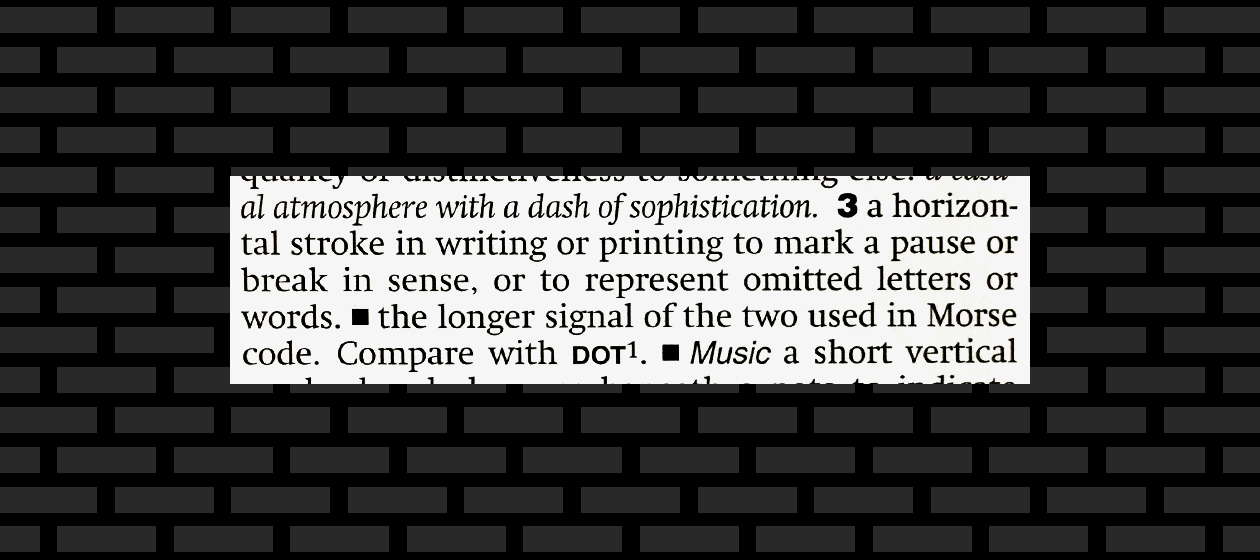9 confusing ways to pluralize words
Why must we make everything so complicated?


1. Add a suffix
This is what we normally do in English with –s and –es, and what many other languages do with a wide variety of suffixes: –en, –er, –ot, –im, –ta, –au, you name it. In English: Obviously we do it with –s. But we also do it many ways in loans. Enthusiasts of Welsh music go to one eisteddfod but several eisteddfodau; psychologists have one schema but multiple schemata.
2. Change the suffix
The Week
Escape your echo chamber. Get the facts behind the news, plus analysis from multiple perspectives.

Sign up for The Week's Free Newsletters
From our morning news briefing to a weekly Good News Newsletter, get the best of The Week delivered directly to your inbox.
From our morning news briefing to a weekly Good News Newsletter, get the best of The Week delivered directly to your inbox.
This is what Italian and Latin do. Latin words change –us to –i, –um to –a, and –a to –ae. But what about octopus, which is a Latin borrowing of Greek oktopous? Do we say octopi as in Latin, or octopodes as in Greek, or toss in the towel and say octopuses? What about ignoramus, which in Latin is not a noun but a conjugated verb (meaning "we don't know") and so wouldn't get a pluralization? In English: Many of our imported plurals come from Latin, Greek, and Italian: one radius, two radii; one criterion, two criteria; one panino, two panini.
3. Add or change prefixes
This is not as widespread as suffixation, but it's quite common among many African languages, and there are hundreds of languages in Africa. In English: They're typically words you almost never see, for things like foreign currency. (For instance, if you go to Lesotho you can spend one loti or many maloti). More common words like impala did not bring their plurals with them (izimpala) when we borrowed them.
4. Add infixes or circumfixes
A free daily email with the biggest news stories of the day – and the best features from TheWeek.com
What's an infix? It's like a prefix or a suffix except that you put it in the middle of the word. A circumfix is a prefix and a suffix added at the same time. Neither of these is common in word languages, but they do exist. In English: If you can show me a noun borrowed into English that pluralizes with either, I'll buy you a beer. Make that two zbeerz.
5. Change internal vowels
German often does this, sometimes along with a suffix: Buch, Bücher is book, books. Arabic does quite a lot of things by changing the vowels on stems, and pluralization is one: kitab/book, kutub/books. In English: Nearly all the words we have like this are ones we've always had: man, men; goose, geese; and lots of others.
6. Reduplicate
Some languages, especially Malayan and Polynesian languages but also some North American native languages, will duplicate part or all of a word to make a plural: in Indonesian, orang is person and orang-orang is people. In English: This would actually be fun. But I haven't found any examples of it. Yet. Find me one and I'll buy you beerbeer.
7. Use a whole different word
Slavic languages do this in some cases, especially words for "person" and "year." Consider Russian: chelovek is person and lyudi is people. In Polish, rok is year and lata is years. In English: We do this when we pluralize person to people. Doing this with words on loan from foreign languages would probably be too confusing. Most of us don't make it to that level of play.
8. Change the tone
Some languages change the tone to make a word plural. You won't hear this in languages like Chinese, where the tone on a word doesn't change. But you'll hear it, for instance, in some African languages. In English: Good luck ever getting most English speakers to use tone for anything like this. We just use it to signify questions, exclamations, and other attitude things.
9. Do nothing
This is very, very common. Some languages, like Chinese, never change the form of words; you just know from nearby words how many there are. Other languages have some words that don't change and others that do. In English: We have plenty of old English words like this, such as deer and fish. Many units of currency are like this, too.
So why don't we just add –s and –es onto everything — or at least words borrowed from foreign languages? A few potential reasons...
* Political correctness: We may be feeling guilty about stealing these words from other languages, and compensating by trying to let them keep "their own voices."
* Last twitches of an imperial power: We may, conversely, actually be reminding ourselves of our great global reach. We take things from everywhere. Our wordstock is like a trophy room full of staring heads, complete with strange plurals to prove foreign origin.
* Desire for precision: Many of these words are used in technical fields, where exactitude of terminology is important. One way of looking like you're aware of fine distinctions and proper usage is to show that you know where the word comes from and how it's pluralized there.
* Insecurity of speakers in a famously capricious and irregular language: Give an English speaker a new word and two possible spellings and he or she will probably assume the weirder-looking one is the more correct. We are taught from an early age that regularizing spelling and conjugation and plurals on irregular words is a sign of poor education: "I goed and seed the mouses and gooses at the zoo last nite." If there's an available irregular version, we will assume it's the better version.
* Conversational trump card: This goes with the last one. Tell me you've never given someone a Sheldon Cooper look and corrected their pitiful misconception about some word. English can be an evil language.
* Thirst for novelty: We just love new words and new ways of saying things. English is the magpie of languages, stuffing its nest full of shiny things. We'll even make up things sometimes to sound more foreign. Larry Niven, in his novel Discworld, took the obviously English word bandersnatch — invented by Lewis Caroll — and gave it a foreign-sounding plural, bandersnatchi. Why? Sounds more exotic and sci-fi, I guess.
* Renaissance hangover: When the Latin and Greek classics were rediscovered in the Renaissance, everyone thought they were much better languages than English. Some people insisted on trying to impose some Latin rules on English grammar (no ending a sentence with a preposition, for instance). Spellings of words long since borrowed from Latin via French were changed to reflect how they came from Latin (this is why there's an o in people). So of course, by that reasoning, any new word borrowed from Latin had to keep as much of its form as possible — including the plural!
James Harbeck is a professional word taster and sentence sommelier (an editor trained in linguistics). He is the author of the blog Sesquiotica and the book Songs of Love and Grammar.
-
 Venezuela’s Trump-shaped power vacuum
Venezuela’s Trump-shaped power vacuumIN THE SPOTLIGHT The American abduction of Venezuelan President Nicolás Maduro has thrust South America’s biggest oil-producing state into uncharted geopolitical waters
-
 Most data centers are being built in the wrong climate
Most data centers are being built in the wrong climateThe explainer Data centers require substantial water and energy. But certain locations are more strained than others, mainly due to rising temperatures.
-
 ‘Maps are the ideal metaphor for our models of what the world might be’
‘Maps are the ideal metaphor for our models of what the world might be’Instant Opinion Opinion, comment and editorials of the day
-
 In the future, will the English language be full of accented characters?
In the future, will the English language be full of accented characters?The Explainer They may look funny, but they're probably here to stay
-
 10 signature foods with borrowed names
10 signature foods with borrowed namesThe Explainer Tempura, tajine, tzatziki, and other dishes whose names aren't from the cultures that made them famous
-
 There's a perfect German word for America's perpetually enraged culture
There's a perfect German word for America's perpetually enraged cultureThe Explainer We've become addicted to conflict, and it's only getting worse
-
 The death of sacred speech
The death of sacred speechThe Explainer Sacred words and moral terms are vanishing in the English-speaking world. Here’s why it matters.
-
 The delicate art of using linguistics to identify an anonymous author
The delicate art of using linguistics to identify an anonymous authorThe Explainer The words we choose — and how we use them — can be powerful clues
-
 Dashes and hyphens: A comprehensive guide
Dashes and hyphens: A comprehensive guideThe Explainer Everything you wanted to know about dashes but were afraid to ask
-
 A brief history of Canadian-American relations
A brief history of Canadian-American relationsThe Explainer President Trump has opened a rift with one of America's closest allies. But things have been worse.
-
 The new rules of CaPiTaLiZaTiOn
The new rules of CaPiTaLiZaTiOnThe Explainer The rules for capitalizing letters are totally arbitrary. So I wrote new rules.
